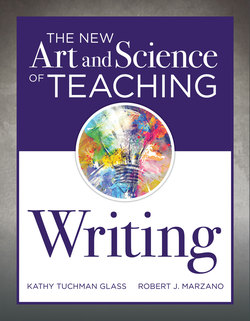Читать книгу The New Art and Science of Teaching Writing - Robert J Marzano - Страница 13
На сайте Литреса книга снята с продажи.
ОглавлениеCHAPTER 3
Conducting Direct Instruction Lessons
Students benefit greatly from direct instruction on new content. This type of instruction commonly suffers from the perception that it is straight presentation in lecture format. This is far from the truth. As this chapter illustrates, direct instruction has a number of essential components that teachers can deliver in a wide variety of ways. Regardless of the specific strategies that a teacher uses, the net effect of direct instruction should be that students understand the key parts of the new content and how together they form a unified whole.
This teacher action includes the following elements.
• Element 6: Chunking content
• Element 7: Processing content
• Element 8: Recording and representing content
Element 6: Chunking Content
Learning new information can be overwhelming; however, breaking it down into manageable increments can facilitate student learning. Figure 3.1 presents the self-rating scale for teachers to use.
Figure 3.1: Self-rating scale for element 6—Chunking content.
In this section, we specifically highlight these strategies.
• Using preassessment data to plan for chunks
• Allowing for processing time between chunks
Using Preassessment Data to Plan for Chunks
When introducing new content and information—whether through reading complex text, listening to a speech or video, watching a demonstration, or another way—dividing it into manageable parts offers advantages. By conducting a preassessment, teachers can use the data they collect about students’ prior knowledge to help determine how to chunk the material. If teachers learn that students are somewhat familiar with the information, the amount of content they present at a time can be larger than if it is uncharted territory, in which case smaller sections suffice.
